Jinshuai Yang
PCAE: A Framework of Plug-in Conditional Auto-Encoder for Controllable Text Generation
Oct 07, 2022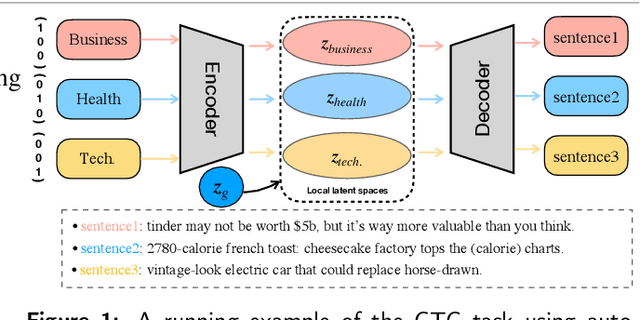
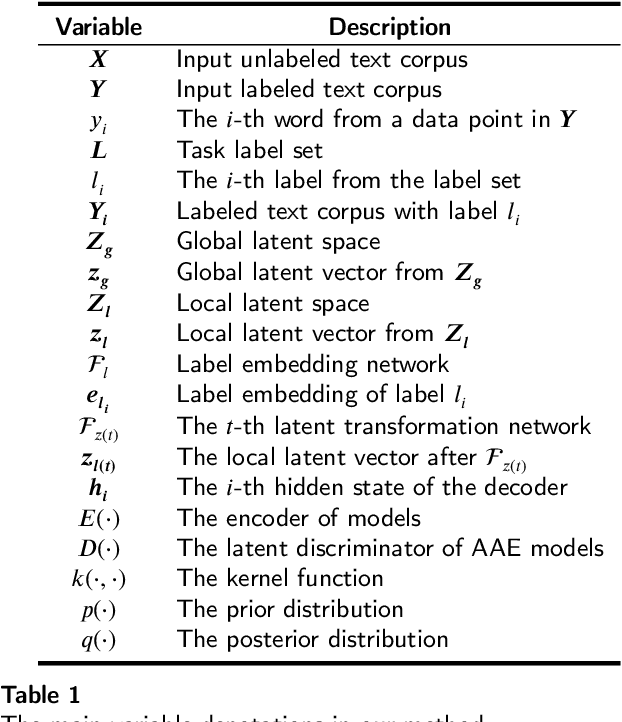


Abstract:Controllable text generation has taken a gigantic step forward these days. Yet existing methods are either constrained in a one-off pattern or not efficient enough for receiving multiple conditions at every generation stage. We propose a model-agnostic framework Plug-in Conditional Auto-Encoder for Controllable Text Generation (PCAE) towards flexible and semi-supervised text generation. Our framework is "plug-and-play" with partial parameters to be fine-tuned in the pre-trained model (less than a half). Crucial to the success of PCAE is the proposed broadcasting label fusion network for navigating the global latent code to a specified local and confined space. Visualization of the local latent prior well confirms the primary devotion in hidden space of the proposed model. Moreover, extensive experiments across five related generation tasks (from 2 conditions up to 10 conditions) on both RNN- based and pre-trained BART [26] based auto-encoders reveal the high capability of PCAE, which enables generation that is highly manipulable, syntactically diverse and time-saving with minimum labeled samples. We will release our code at https://github.com/ImKeTT/pcae.
AdaVAE: Exploring Adaptive GPT-2s in Variational Auto-Encoders for Language Modeling
May 20, 2022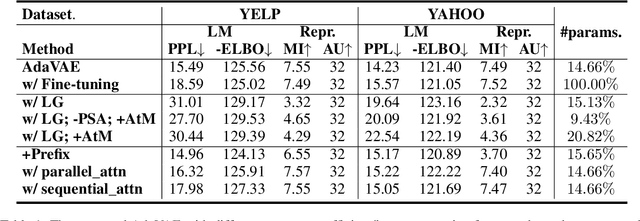
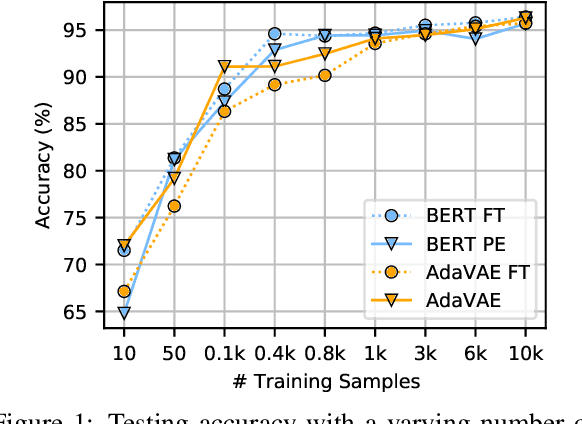
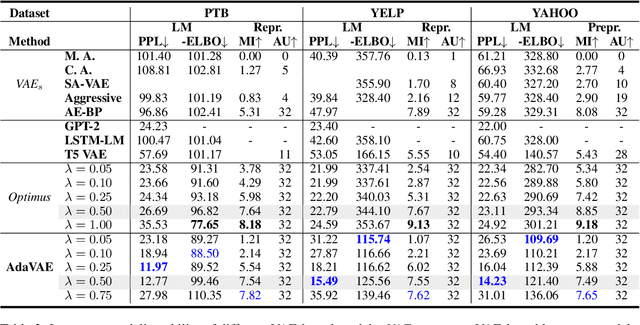
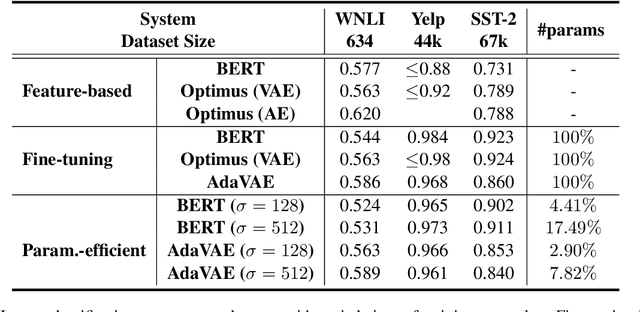
Abstract:Variational Auto-Encoder (VAE) has become the de-facto learning paradigm in achieving both representation learning and generation for natural language. However, existing VAE-based language models either employ elementary RNNs, which is not powerful to handle complex situations, or fine-tunes two pre-trained language models (PLMs) for any downstream task, which is a huge drain on resources. In this paper, we introduce the first VAE framework empowered with adaptive GPT-2s (AdaVAE). Different from existing systems, we unify both the encoder\&decoder of VAE model using GPT-2s with adaptive parameter-efficient components. Experiments from multiple dimensions validate that AdaVAE is competent to better organize language in generation task and representation modeling, even with less than $15\%$ activated parameters in training. Our code is available at \url{https://github.com/ImKeTT/adavae}.
Pixel-Stega: Generative Image Steganography Based on Autoregressive Models
Dec 21, 2021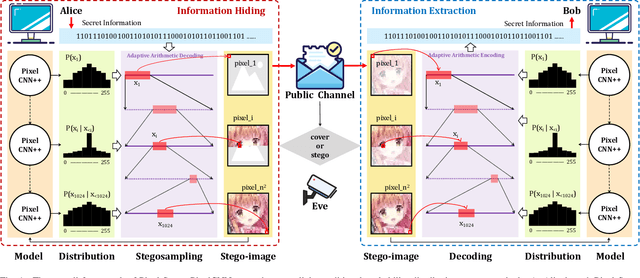
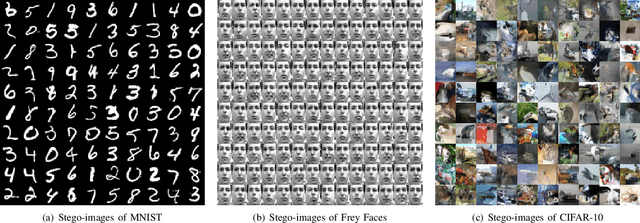
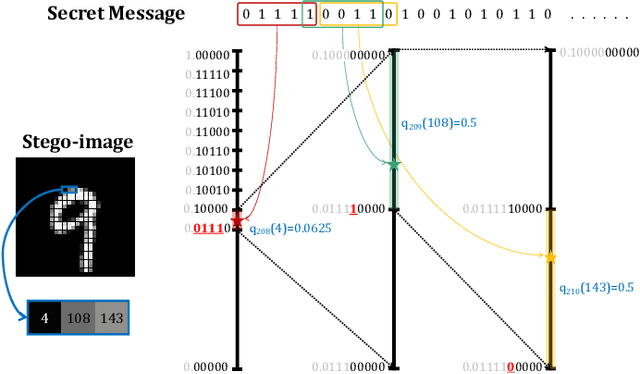
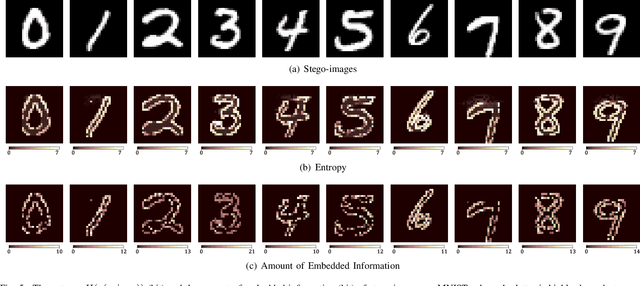
Abstract:In this letter, we explored generative image steganography based on autoregressive models. We proposed Pixel-Stega, which implements pixel-level information hiding with autoregressive models and arithmetic coding algorithm. Firstly, one of the autoregressive models, PixelCNN++, is utilized to produce explicit conditional probability distribution of each pixel. Secondly, secret messages are encoded to the selection of pixels through steganographic sampling (stegosampling) based on arithmetic coding. We carried out qualitative and quantitative assessment on gray-scale and colour image datasets. Experimental results show that Pixel-Stega is able to embed secret messages adaptively according to the entropy of the pixels to achieve both high embedding capacity (up to 4.3 bpp) and nearly perfect imperceptibility (about 50% detection accuracy).
Provably Secure Generative Linguistic Steganography
Jun 03, 2021



Abstract:Generative linguistic steganography mainly utilized language models and applied steganographic sampling (stegosampling) to generate high-security steganographic text (stegotext). However, previous methods generally lead to statistical differences between the conditional probability distributions of stegotext and natural text, which brings about security risks. In this paper, to further ensure security, we present a novel provably secure generative linguistic steganographic method ADG, which recursively embeds secret information by Adaptive Dynamic Grouping of tokens according to their probability given by an off-the-shelf language model. We not only prove the security of ADG mathematically, but also conduct extensive experiments on three public corpora to further verify its imperceptibility. The experimental results reveal that the proposed method is able to generate stegotext with nearly perfect security.
Graph-Stega: Semantic Controllable Steganographic Text Generation Guided by Knowledge Graph
Jun 02, 2020



Abstract:Most of the existing text generative steganographic methods are based on coding the conditional probability distribution of each word during the generation process, and then selecting specific words according to the secret information, so as to achieve information hiding. Such methods have their limitations which may bring potential security risks. Firstly, with the increase of embedding rate, these models will choose words with lower conditional probability, which will reduce the quality of the generated steganographic texts; secondly, they can not control the semantic expression of the final generated steganographic text. This paper proposes a new text generative steganography method which is quietly different from the existing models. We use a Knowledge Graph (KG) to guide the generation of steganographic sentences. On the one hand, we hide the secret information by coding the path in the knowledge graph, but not the conditional probability of each generated word; on the other hand, we can control the semantic expression of the generated steganographic text to a certain extent. The experimental results show that the proposed model can guarantee both the quality of the generated text and its semantic expression, which is a supplement and improvement to the current text generation steganography.
 Add to Chrome
Add to Chrome Add to Firefox
Add to Firefox Add to Edge
Add to Edge